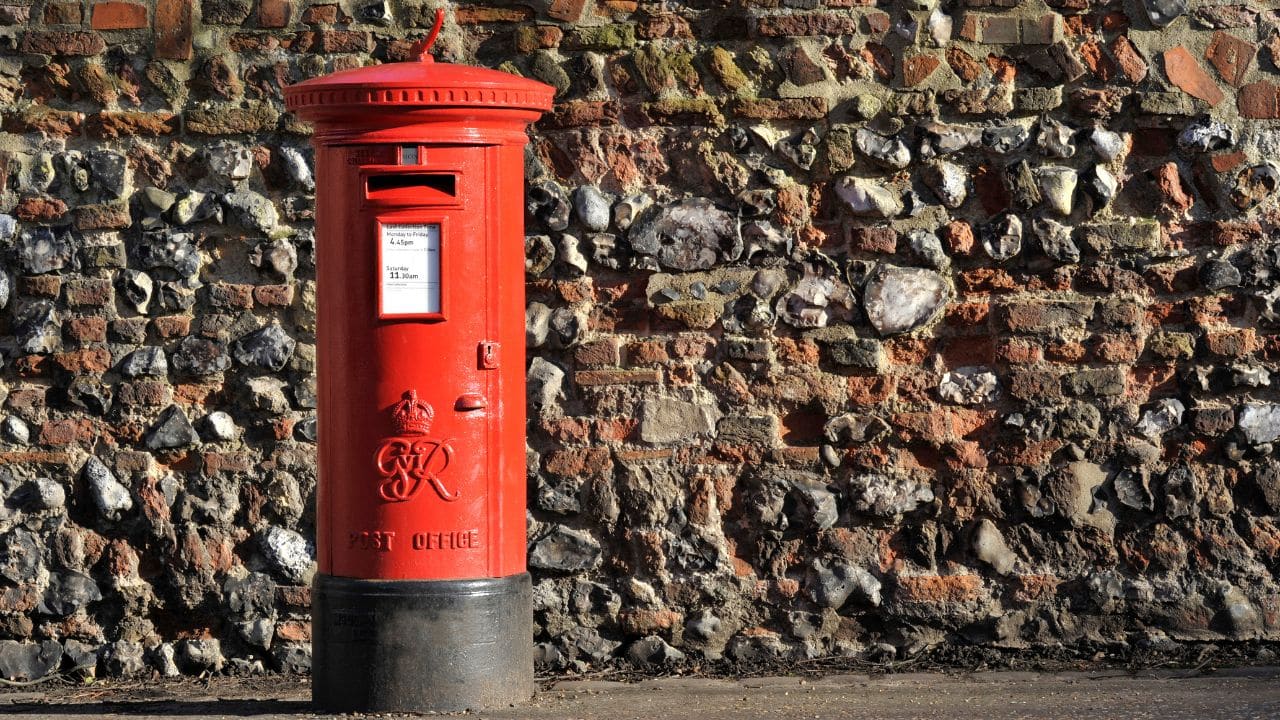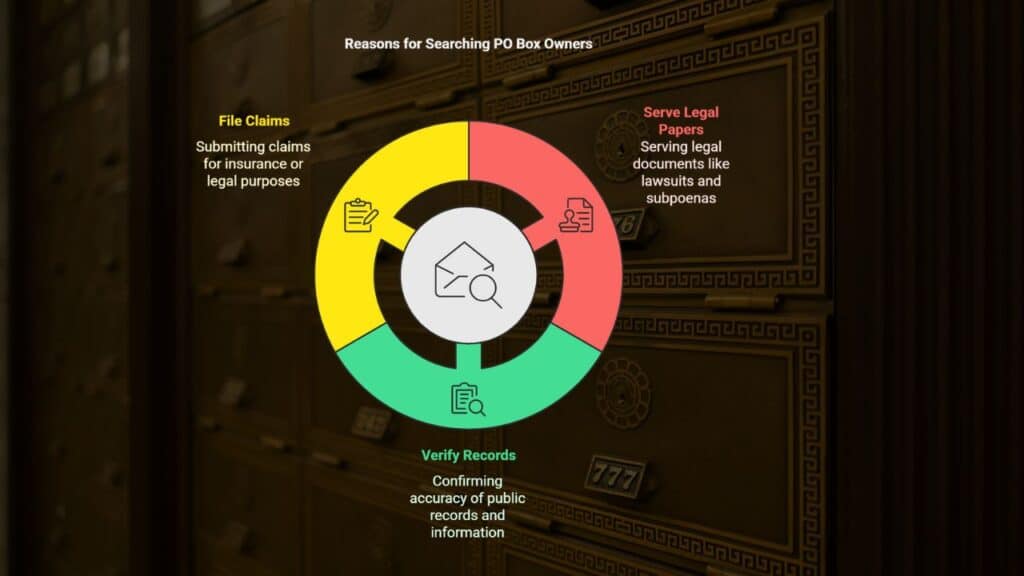Can you see who owns a PO box? You face a real problem when you need to learn more about a post office box. Many people need to know this for legal issues or to resolve mail delivery disputes.
A PO box hides its owner’s name. A request for a boxholder’s details may come up for court matters or other claims.
One fact is that the United States Postal Service does not share a forwarding address without a formal request. The USPS website shows a PO Box Locator tool. You can also visit your local post office or send a letter to the postmaster.
Our guide explains the proper steps and tools, such as mail forwarding and address lookup systems, to help you find the needed information. Keep reading.
Key Takeaways
- The United States Postal Service does not share a PO Box owner’s address without a formal request.
- The USPS PO Box Locator tool was launched in 2007 to help find nearby boxes using a zip code or address.
- You can submit a request for owner details by writing a letter according to 39 CFR 265.14(d) and including all needed proof.
- Visiting a local post office or using reverse lookup services can help but must follow strict legal steps to avoid fines or jail time.
Why People Search for PO Box Owners
People search for a PO box owner to serve legal papers. Lawsuits and subpoenas drive this need. Users check the United States Postal Service tools, like www.usps.com, to find a post office box or forwarding address.
Mail forwarding details often link to a zip code or street address.
People also search to verify records and file claims. Authorities protect forwarding addresses until law permits release. Misuse of this process risks fines up to $10,000 or even jail time.
Next, let us review legal methods to identify PO box owners.
Legal Methods to Identify PO Box Owners
You can file a query for boxholder records with the postal office. You can also use the office box finder tool to get more clues.
Submitting a Request for Boxholder Information
I show clear steps to send a boxholder request letter. The steps help find a post office box holder using the US Postal Service.
- Write your letter following guideline 39 CFR 265.14(d) and use the USPS template.
- Address the letter to Postmaster, Tempe, Arizona, and add a valid zip code.
- Include a self-addressed, postage-paid envelope that carries a stamp or postage meter receipt.
- List full PO box details to aid in mail forwarding or post office box verification.
- Attach a certification that links your request to legal proceedings when you act pro se.
- Add any required proof using a credit card or online payment for DHL services if needed.
Using USPS’s PO Box Locator Tool
USPS created a tool in 2007. It helps readers find available PO boxes by zip code or address.
- Tool origin: The tool launched on November 9, 2007 and keeps data current.
- Search by ZIP: The tool lets readers enter a zip code to locate nearby post office boxes.
- Input details: Users enter their address to see available post office boxes and sizes.
- Review results: The tool displays prices, a post office address, a phone number, and hours.
- Know rates: The tool shows that a Priority Mail Flat Rate Box ships at $8.95 for packages up to 70 lbs.
Alternative Methods for Identifying PO Box Owners
Stop by your local postal hub and use online address verification tools to track a post office box. Try a reverse lookup service to check a zip code, forwarding address, and parcel locker details, and uncover clues fast.
Visiting the Local Post Office
Visiting the local post office offers a direct way to get box details. It works best when you have official documents and clear information.
- Ask a postal worker for help with the PO box details.
- Show your valid ID and a forwarding address at the counter.
- Give the correct zip code and post office box number to the clerk.
- Complete any needed forms to start a mail forwarding inquiry.
- Write follow-up letters on envelopes if the answers come slowly or seem off.
- Accept that postal employees might reply slowly or give wrong facts.
Using Reverse PO Box Lookup Services
Reverse PO Box lookup services help you find who owns a post office box. The tools use a zip code and other details to show a box holder’s name and forwarding address. They rely on data from the post office and not on private companies like UPS or FedEx.
Misusing these services can lead to fines up to $10,000 or even jail time.
Users must follow legal steps when making a search. These services give clear details that help verify a post office box. They also show the mail forwarding address and other key info.
Next, we move on to address lookup and verification tools.
Address Lookup and Verification Tools
Address Lookup and Verification Tools work fast and show clear details. They check data from the post office and verify the post office box and its forwarding address. Tools compare a zip code with records to pinpoint a location.
Bulk mail sender requests need the sender’s zip code or to go to USPS in Washington D.C.
Tools sift through records from both public and private sources. Subpoenas sometimes fetch the needed info from companies. These tools use available data to match a PO box with its details.
They help cut through confusion and find results quickly.
Challenges in Finding PO Box Owners
Privacy laws and errors in a forwarding address or zip code make it tough to match records for a PO Box holder, and missing data from the post office can throw you a curve, so read on for more insights.
Privacy Laws and Restrictions
State rules guard data tied to a PO box. Laws restrict who sees a boxholder’s details. Misuse of this info can cost jail time or fines up to $10,000. Officials use zip codes to track records in the post office.
Forwarding addresses stay hidden unless a court case demands them. The post office follows strict rules on data sharing. People must respect these laws to avoid penalties. Users get only the basic info on PO boxes.
Incomplete or Incorrect Information
Following the discussion on privacy laws and restrictions, incomplete or incorrect information may slow your search. Postal employees sometimes send replies slowly or give wrong details.
Follow-up letters might be needed to get the right forwarding address, PO box details, or zip code. Errors like these affect your success with the USPS’s tools.
Incorrect data may lead to search delays. Some replies carry wrong numbers or info. Mistakes force you to check details again. Inaccurate records risk wasting time as letters must be sent again for clarification.
Tips for a Successful Search
Gather clear PO box details, use USPS box locator tools, check local post office records, and try reverse lookup techniques to improve your search—read on for more tips.
Gather Accurate PO Box Details
Accurate box details boost your search. Record the PO box number and its forwarding address. Use the USPS PO Box Locator tool to check records. Follow the USPS template outlined in 39 CFR 265.14(d) to certify your request and tie it to legal proceedings.
Check all records for any errors. Confirm that the PO box details and forwarding address match your documents. Each detail matters when you complete the USPS form. This step helps you hit the nail on the head in your search.
Use Reputable Tools and Services
Reputable tools help you find a PO box owner. A trusted USPS PO Box locator gives clear details. Some sites need a subpoena to share data. A bulk mail request uses your ZIP code or goes to USPS in Washington, D.C.
Verified reverse lookup services reveal proper data. Address lookup tools check the information on a po box. One tool clears up errors with each check. Fans of clean results choose these services for a clear search.
Takeaways
This guide shows how to find boxholder details. It explains legal steps to get open information. You learn to use the USPS Box Finder tool and online searches. A formal letter to the post office can help you get results.
Local visits add to your search tool kit. Your steps work fast and clear. Act now with a plan that may solve your issue.
FAQs
1. How can I find who owns a post office box?
You can search public records and ask the postal service. Sometimes a visit or phone call to your local post office may uncover details. You might be surprised, like finding a secret door in an old house.
2. Is it legal to look up a mailbox owner?
Rules exist to protect privacy, so you need a real reason to dig in. Check public records and court documents before taking a peek, and stick to official sources. Think of it as looking for clues with a legal treasure map.
3. What methods help identify those who use a post office box?
Ask local postal workers or search online for business records and court filings. These records sometimes list a business name or an alias tied to a post office box. It works like piecing together a jigsaw puzzle, one small bit at a time.
4. What if a mailbox owner uses a fake name or trade name?
They may hide their real identity behind an alias. Compare multiple public documents and records to tease out the truth. It is like following breadcrumbs in a trail that leads to the real story.








































